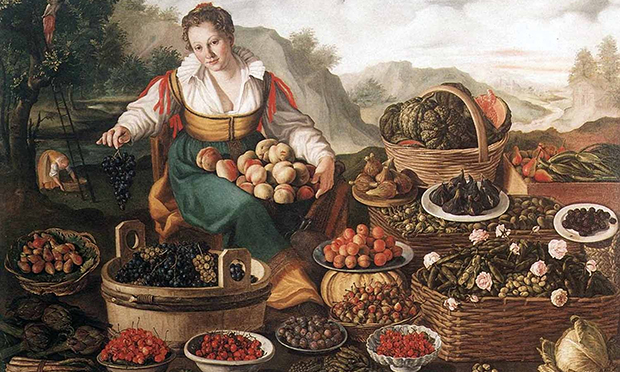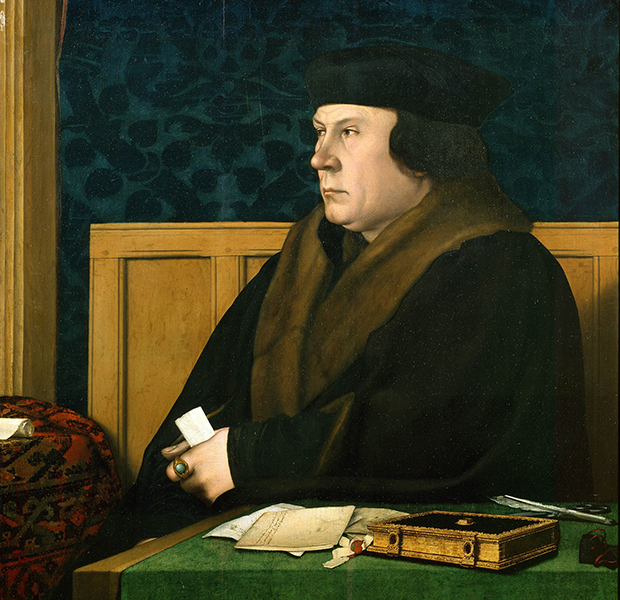Feast for the eyes

When Rafe Sadler, Thomas Cromwell’s secretary and close friend was able to afford a healthy rural home for his growing family, he built a fine brick mansion we now know as Sutton House, crouching amidst the cacophony of Homerton and Mare Street, today neither healthy nor rural.
Hackney went on being a pleasant country retreat, conveniently close to the city, where Henry VIII and his chief advisor Cardinal Wolsey had palatial properties.
This column, as she trotted off daily to Cawood village school, past the stone gatehouse – all that remained of Wolsey’s palace beside the river Ouse not far from York – used to be told in sententious tones, ‘Would that I had served my God as I have served my King’, his farewell words on the journey back to London to endure disgrace, sickness and probably death by poisoning.
But Hilary Mantel tells it better, placing the charismatic Wolsey as the catalyst for her three novels about Thomas Cromwell, her unlikely but likeable hero.

Image: Twitter
Wolsey’s charm and steely determination inspired the devotion of Cromwell, his young advisor and henchman, and his betrayal determined the motives of revenge and subsequent bloodshed that followed.
One of the most vivid images of the filmed version of the first two volumes of the trilogy is of Wolsey voluptuously caressing a bowl of early, out-of-season fruit, in which charm and cupidity are equally displayed.
Mantel goes beyond illuminating the hard facts of history with vivid imagination, bringing shadowy personalities to life, bouncing off the page at us; she sees and hears as well as reads and writes, and sees a great deal more than most of us, like the dog’s footprint in the brickwork at Sutton House, so her bowl of cherries tells us far more about Wolsey than pages of footnotes.

A phantasmagorical image of food historian Ivan Day in the Cambridge Independent, in a grey suit and blue tie, lurking amidst his magnificent displays in the exhibition Feast and Fast at the Fitzwilliam Museum, gives us an idea of the brilliant visual effects of Renaissance banquets.
This is what Wolsey and Henry VIII revelled in, and Cromwell knew how to organise. The swan in the painting in the background is hanging in a kitchen waiting to be dealt with.
Plucked and roasted it would look like any other fowl. But when the plumage was carefully removed and the head and neck preserved they could become the flamboyant decoration of a fine pie, recycled many times, as on the left, or the peacock on the right, plonked on its own pie.
This static display was an improvement on the medieval presentation of a roast peacock, carefully stitched back into its feathers, kept upright by a metal rod, and equipped with a clockwork mechanism to allow the bird to strut up and down the table, belching forth flames from a inflammable wad in its beak.
The photograph shows lesser birds on smaller pies, and a lobster trying to escape from his pastry prison.
It must have been a pleasant relief to escape to a modest country retreat in Hackney, away from the massive, state of the art kitchens at Hampton Court – researched and reconstructed by Peter Brears, and now a tourist attraction – which churned out food for over 500 courtiers and servants daily.
Wolsey and Cromwell, two Thomases, picking away at a bowl of fruit, and plotting their next coup.
Feast and Fast: The Art of Food in Europe, 1500-1800 runs until 26 April at the Fitzwilliam Museum in Cambridge.
For more information, head to feast-and-fast.fitzmuseum.cam.ac.uk/
